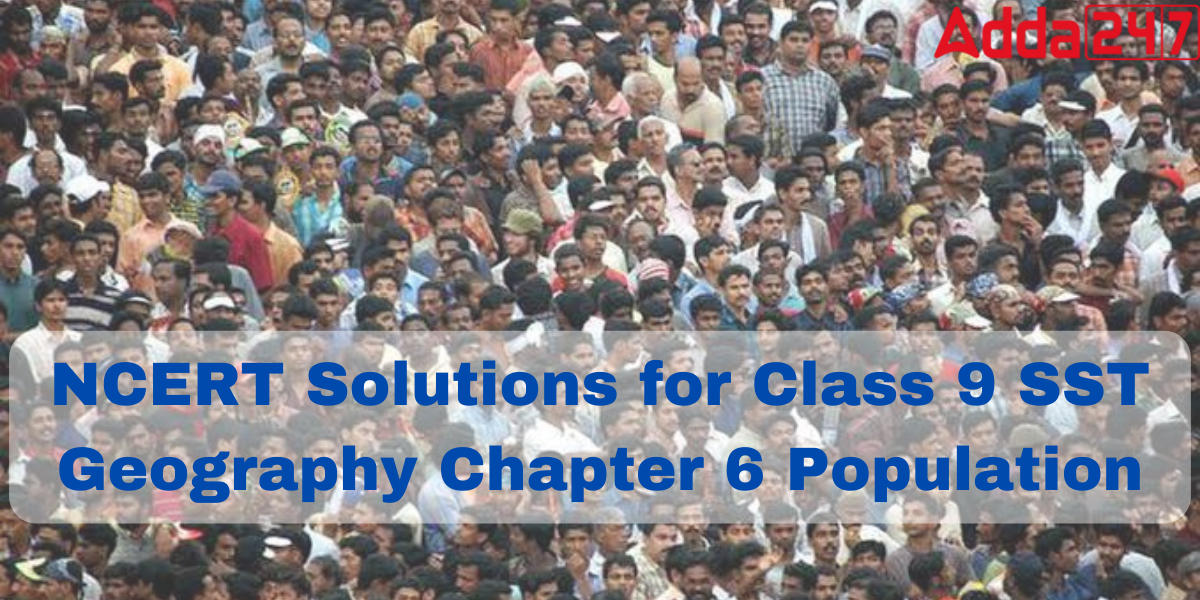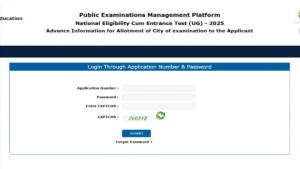Table of Contents
NCERT Solutions for Class 9 SST Geography Chapter 6 Population Notes
NCERT Solutions for Class 9 SST Geography Chapter 6 Population notes are provided in this article. NCERT Solutions for class 9 is the finest resource for getting a high score on the class 9 Examination. Adda247 Expert faculty team prepared NCERT Solutions for Class 9 SST Geography Chapter 6 Population exercises of that chapter for a better grasp of the topics. These NCERT Solutions answer all questions in an easy and simple manner. These solutions will help you understand the concepts covered in the chapter completely. By writing these answers in the exam students will undoubtedly be able to achieve high scores. Keep learning with Adda247.
NCERT Solutions for Class 9 SST Geography Chapter 6 Population Notes pdf
NCERT Solutions for Class 9 SST Geography Chapter 6 Population pdf is given in pdf format so students can easily download it for future use. Click here to download NCERT Solutions for Class 9 Social Science Geography Chapter 6 Population
Class 9 SST Geography Chapter 6 Population Summary
NCERT Geography Class 9 SST Geography Chapter 6 – Population covers the importance of the human population in terms of growth and development People in the nation are also concerned about the population’s distribution and expansion. The following important topics covered in this chapter should be considered by students.
- Population Growth and processes of population change
- Population size and distribution
- Characteristics or qualities of the population
- Factors affecting change in population
- Difference between population growth and population change
- Advantages of a healthy population
- Relation between occupational structure and development
- Significant features of the National Population Policy 2000
NCERT Solutions for Class 9 SST Geography Chapter 6 Population Questions with Answers
1. Choose the right answer from the four alternatives given below.
(i) Migrations change the number, distribution and composition of the population in
(a) the area of departure
(b) the area of arrival
(c) both the area of departure and arrival
(d) None of the above
Answer: Both the area of arrival and departure.
(ii) A large proportion of children in a population is a result of
(a) high birth rates
(b) high life expectancies
(c) high death rates
(d) more married couples
Answer: High birth rates.
(iii) The magnitude of population growth refers to
(a) the total population of area
(b) the number of persons added each year
(c) the rate at which the population increases
(d) the number of females per thousand males
Answer: the number of persons added each year
(iv) According to the Census, a “literate” person is one who
(a) can read and write his/her name
(b) can read and write any language
(c) is 7 years old and can read and write any language with understanding
(d) knows the 3 ‘R’s (reading, writing, arithmetic)
Answer: is 7 years old and can read and write any language with understanding.
2. Answer the following questions briefly.
(i) Why is the rate of population growth in India declining since 1981?
Answer: Since 1981, The rate of population growth in India declined as a result of increased family planning awareness. The government has made the most efforts possible to promote a family planning programme. Due to the rise in literacy, residents are more aware of government initiatives and policies and may therefore plan their families more effectively.
(ii) Discuss the major components of population growth.
Answer: The major components of population growth are:
- Birth rate
- Death rate
- Migration
(iii) Define age structure, death rate and birth rate.
Answer: Age Structure: The number of persons in each age group within a population is referred to as the age structure.
Death Rate: The death rate is the number of fatalities per 1,000 people per year.
Birth Rate: The number of live births per 1,000 people in a year is known as the birth rate.
(iv) How is migration a determinant factor of population change?
Answer: Migration is the term for people moving between different geographic areas. International and internal migration are two different types of migration. Migration is crucial in determining population change since it alters the demographics (size and makeup) of the regions of departure and arrival.
3. Distinguish between population growth and population change.
Answer:
| Population growth | Population change |
| Population growth is an increase in a region’s population over a specified time period. | It is the change in the population’s size, composition, or distribution over time. |
| The annual difference between the birth and death rates, along with migration, can be used to estimate population increase. | The difference in population size between the beginning and end of a certain time period can be used to measure population change. |
| The two main factors contributing to population expansion are birth rate and migration. | The main factors influencing population change are birth rates, migration, and emigration. |
4. What is the relation between occupational structure and development?
Answer: An important measure of progress is the proportion of a population that is engaged in the economy. The term “occupational structure” refers to how the population is divided up into several occupation categories. The occupational structure, which is divided into primary, secondary, and tertiary categories, refers to how the population is distributed in relation to various jobs. Building and construction work are among the principal activities, and tertiary activities include transportation, communication, commerce, and administration. In industrialized and developing nations, different proportions of individuals participate in various activities.
In less developing nations, a sizable portion of the populace works in primary occupations like forestry, agriculture, animal husbandry, etc where as a sizable portion of the population works in manufacturing in more developing countries.
5. What are the advantages of having a healthy population?
Answer: The advantages of having a healthy population are:
- A healthy person is significantly more effective and productive than a person who is unwell.
- A healthy population reduces the burden on healthcare caused by ill ones.
- A population that is educated and in good health has the capacity to build a developed and prosperous economy.
6. What are the significant features of the National Population Policy 2000?
Answer: The significant features of the National Population Policy 2000 are
- The National Population Policy (NPP) 2000 provides a framework for policymaking that aims to make education free and mandatory for all children up to the age of 14, lower the infant mortality rate to below 30 per 1000 live births, and make family welfare a people-centered initiative.
- Providing young people with nutritional treatments and food supplements.
preventing teen pregnancy and sexually transmitted diseases while also educating them about the dangers of unprotected sex. - Making affordable and accessible contraception services.
- Ensuring that all children are immunized against all diseases that can be prevented by vaccines.
- Encouraging girls to delay marriage, and making family welfare a people-centered initiative.
NCERT Solutions for Class 9 SST Geography Chapter 6 Population-FAQs
Q. What is population short question answer?
The average number of people living in a certain area is referred to as its population.
Q.How can I access the online PDF version of the NCERT Solutions for Class 9 SST Geography Chapter 6 Population?
Ans. The NCERT Solutions for Class 9 SST Geography Chapter 6 Population PDF may be downloaded using the link in the article.
Q. What are the advantages of using Adda247’s NCERT Solutions for Class 9 SST Geography Chapter 6 Population?
Ans. The advantages of using NCERT Solutions for Class 9 SST Geography Chapter 6 Population from Adda247 include the following:
- The NCERT solution as well as a video explanation
- Additionally, a PDF is included, which can be downloaded and saved for future use



 NEET City Intimation Slip 2025 Out at ne...
NEET City Intimation Slip 2025 Out at ne...
 NEET Passing Marks Out of 720, Check NEE...
NEET Passing Marks Out of 720, Check NEE...
 NEET Total Marks- Check NEET Marks Distr...
NEET Total Marks- Check NEET Marks Distr...










